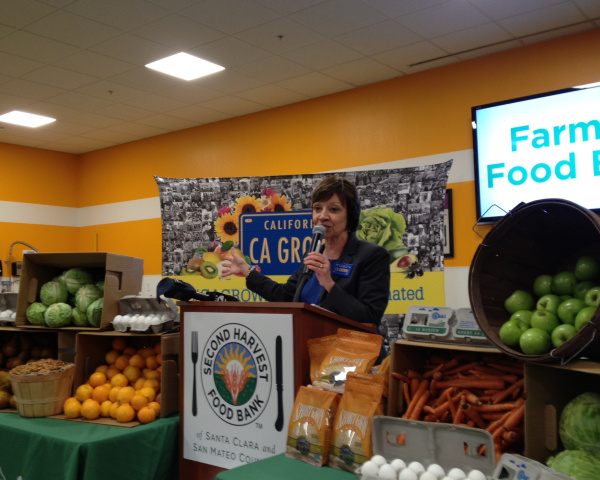BASF Helps Fight Hunger With $75,000 Donation To Feeding America
Contribution will help provide nearly 340 tons of fresh fruits and vegetables to U.S. food banks
By Laurie Greene, CalAgToday Editor, Reporter
BASF is donating $75,000 to Feeding America, the nation’s largest hunger-relief organization, to help feed struggling families and individuals throughout the U.S.
“Hunger is a very real problem for tens of millions of people in America, including low-income families and seniors,” said Scott Kay, Vice President, U.S. Crop Protection for BASF. “Through our contribution to Feeding America, we can help provide healthy fruits and vegetables to people and communities who may not have regular access to them. In many ways, this partnership is an extension of the work we do every day with growers to help them feed our hungry world population.”
The donation will support Feeding America’s National Produce Program, an initiative that helps with planning, transportation and logistics to ensure fresh produce deliveries to the 200 member food banks around the country.
The commitment from BASF will help Feeding America provide 675,000 pounds of produce to families and individuals in need. The donation includes $5,000 in contributions from BASF grower customers who chose to be part of this donation.
“BASF was a natural fit to partner with Feeding America as we continue to focus on providing more nutritious fruits and vegetables for the clients we serve,” said Nancy Curby, vice president of corporate partnerships for Feeding America. “Their support will help extend the reach of our National Produce Program and help more Americans in need.”
Employees at the Research Triangle Park, North Carolina, BASF headquarters also raised more than $18,000 for the Food Bank of Central & Eastern North Carolina through a virtual food drive and a special showing of the movie “Farmland.” The BASF Crop Protection division is also sponsoring the local ABC network affiliate WTVD’s “Heart of Carolina” food drive during the holiday season to collect food and raise money for the Food Bank of Central & Eastern North Carolina and the Second Harvest Food Bank.
“Our business and our employees are very pleased to partner with the many dedicated food bank volunteers who share our commitment to feeding those facing hunger, not only during the holidays, but all year long,” Kay said.
BASF’s Crop Protection division provides innovative solutions in crop protection, seed treatment and biological control as well as solutions to manage water, nutrients, plant stress, pest control and public health. The Crop Protection division supports growers to optimize agricultural production, improve their business efficiency and enhance the quality of life for a growing world population. Further information can be found on the web at www.agro.basf.com or through our social media channels.

















